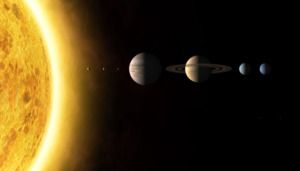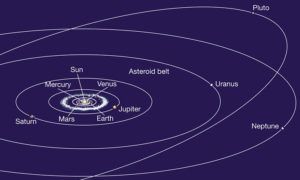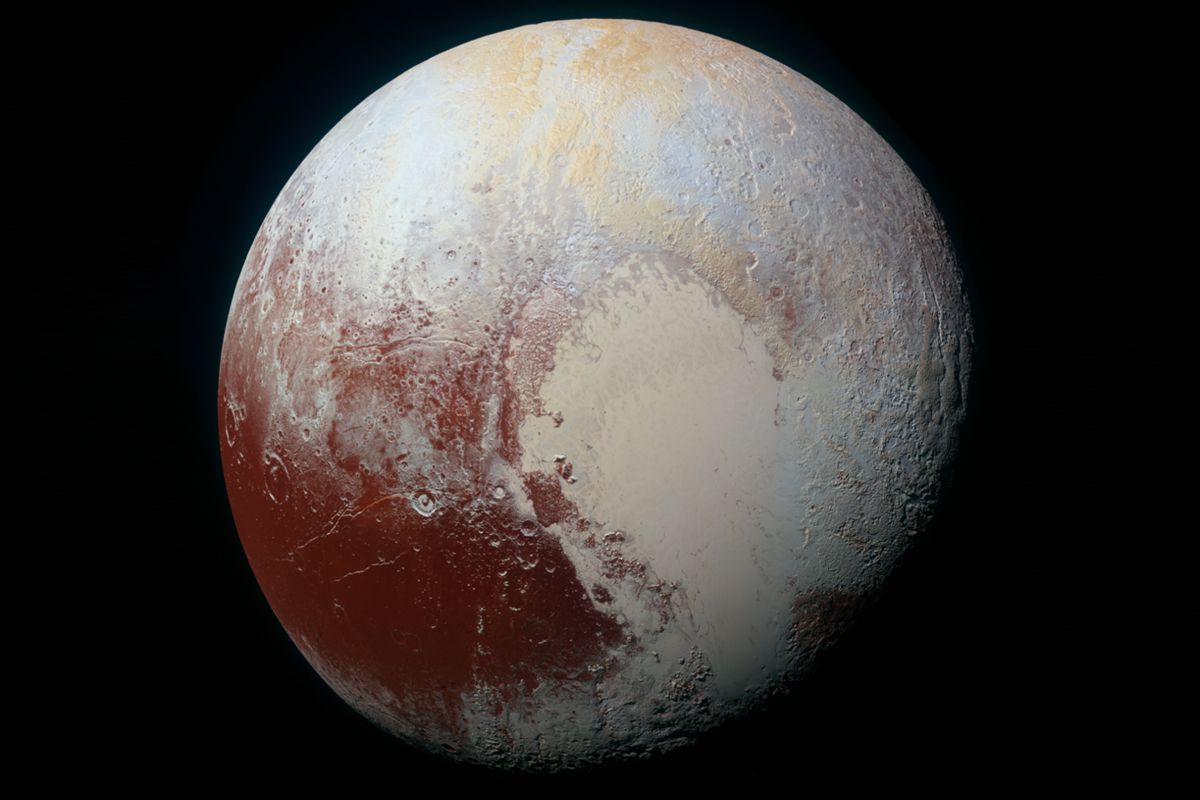(CNN)You’ve heard of men on the moon — but what about moss piglets?
Source: https://www.cnn.com/2019/08/07/world/water-bear-space-intl-scli-scn/index.html

(CNN)You’ve heard of men on the moon — but what about moss piglets?
Source: https://www.cnn.com/2019/08/07/world/water-bear-space-intl-scli-scn/index.html
Technologies have often been observed to improve exponentially over time. In practice this often means identifying a constant known as the doubling time. Moore’s law is, classically, the empirical observation that the number of electronic components that can be put on a chip doubles every 18 to 24 months. Today it is frequently stated in terms of the number of computations available per unit of cost, a formulation promoted by Kurzweil. Different doubling times describe the rate of advancement in many technologies.
A frequently noted competitor to Moore’s law is known as Wright’s law, which has aeronautical roots. Wright’s law expresses the idea that performance of a technology—price or a quality metric—improves by a constant percentage for every doubling of the total number produced. Does exploration of outer space conform to behavior like Moore’s law or Wright’s law? Our results are broadly consistent with these laws. (More)

MANILA, Philippines — A mobile and SMS application developed by IT professionals Revbrain G. Martin, Marie Jeddah Legaspi, and Julius Czar Torreda to help fishermen receive real-time weather, sunrise and sunset, wind speed, and cloud coverage to plan their fishing activity, and an emergency checklist kit app was developed by students Jeorge Loui P. Delfin, Bluen Ginez, Samuel Jose, Rainier Garcia Narboneta, and Eugenio Emmanuel A. Araullo for disaster preparedness won the NASA Space Apps Challenge on October 19–21 at De La Salle University in Manila, Philippines, in partnership with the Embassy of the United States of America and PLDT.
Other projects and solutions developed are games using images from the Hubble Space Telescope, augmented reality mobile app to tell a story of the changes in the Arctic and Antarctic ice, artificial intelligence app helping scientists confirm the habitability of exoplanets, and story-based game using NASA Earth imagery.
They joined together with teams of coders, scientists, designers, storytellers, makers, builders, technologists, thinkers, designers, entrepreneurs, and everyone around the globe working together in a 48-hour sprint to develop solutions to some of the most pressing challenges on Earth and in space, using NASA resources and data.
Since its inception in 2012, the International Space Apps Challenge has become the world’s largest global hackathon, engaging thousands of global citizens to collaborate in building innovative solutions to complex challenges using NASA’s open data. Hackathons are technology development marathons that draw on the talents and initiative of bright-minded people. Space Apps inspires local innovation communities to convene, cooperate, and create. On 2016, Tzar C. Umang brought Space Apps in Dagupan, Pangasinan while Art Polo Gabriel III, Wilson Censon, and Tito Mari Francis Escaño organized one in PLDT InnoLab in Metro Manila. De La Salle — College of Saint Benilde hosted Space Apps on 2017.
A day-long data bootcamp held on October 19 to learn new concepts, strategies and skills from keynote speakers, panelists and mentors. Michael Carroll from Urban Engine in Huntsville, AL and Dr. Patricia Jacobberger, the Senior Advisor in NASA Earth Science Division, introduced Space Apps through a virtual talk while U.S. Embassy Science Fellow Dr. Anondo Mukherjee and U.S. Fulbright fellow Sarah Marie Hartman gave an online lecture about the Earth’s environment. Acting Director Dr. Joel Joseph S. Marciano, Jr. of DOST-Advanced Science and Technology Institute and Program Leader Dr. Marc Caesar R. Talampas of PHL-Microsat discussed microsatellite development in the Philippines.
Several mentors coming from different backgrounds taught participants in the data bootcamp in the form of stardust stations. Stardust stations is an alternative to a lecture format and encourages learning through participatory activities. A stardust station can show applications of data, demonstrate simple hardware projects or teach other hackathon skills. Neil Patrick Del Gallego and Jordan Deja from De La Salle University taught augmented reality and user experience, respectively. Engr. Ariston N. Gonzalez, Lorenzo Sabug, Jr., Benjamin Joseph D. Jiao, and Carlo Dizon Pastoral from PHL-Microsat discussed using Diwata-1 API. Animo Labs incubatee Simon Gregory Mabanta discuss about educational robotics. John Luis Garcia, Dennis Magsajo, and Randy Bardaje taught using Amazon Web Services cloud. Art Polo Gabriel III, the organizer of Space Apps 2016 from Mobility IT 4 Youth, explained the use cases of smartglass applications.
During the hackathon period on October 20–21, teams are expected to find solutions to themed challenges put forth by NASA. They work together with the rest of the world on hackathon weekend to devise creative and innovative solutions to these challenges. Projects Apps projects don not have to be apps and anyone does not need to become a computer programmer to participate. Participants collaborate to build anything — from open-source software, hardware, data visualizations, and citizen science platforms, to videos, art, and other communications solutions — aimed at addressing global challenges.
The overarching theme of the 2018 challenges is “Earth and Space,” underscoring the connections between major challenges, and the potential solutions to them, both on Earth and in space. The 2018 mainstage Space Apps event was hosted by Urban Engine in the U.S. Space and Rocket Center at Huntsville, AL, also known as “The Rocket City.”
YSEALI alumni Ryan Madrid and Malcolm Flores, Dr. Jasmine Albelda from the Philippine Nuclear Research Institute, entrepreneur Ibba Bernardo, and technologists like Cristopher David and Simon Gregory Mabanta served as mentors in the hackathon proper. IdeaSpace and Animo Labs looked upon promising projects and solutions that might have a business potential. Sentinel Hub, Neustar, Amazon Web Services, Microsoft, and IBM offered the use of their technologies for the participants during the hackathon.
After the development period, teams are expected to provide a four-minute presentation about their projects and solutions. Deputy Chief of Mission John Law of the Embassy of the United States of America to the Philippines, Leandro T. Santos, Head of PLDT Enterprise Core Business Research and Development, Deputy Executive Director Engr. Raul C. Sabularse of DOST-Philippine Council for Industry, Energy and Emerging Technology Research and Development, Senior Planning Officer Yvette M. Cabrera from the Department of Information and Communications Technology, Executive Director Federico C. Gonzalez of Animo Labs served as jurors for the Space Apps hackathon.
Jeanie Duwan, Randolf Mariano, and Xavier Lara from the American Spaces Philippines of the US Embassy and Christine M. Abrigo, Donna Labangon, and Kevin Anthony Kaw from De La Salle University organized Space Apps in the Philippines on 2018. Space Apps Philippines lead organizer Michael Lance believes that Filipinos can build projects and open-source solutions that address real-world problems, on Earth and in space. #SpaceApps #SpaceAppsPH

What’s wrong with this illustration of the planets in our solar system? »
For one thing, it suggests that the planets line up for photos on the same solar ray, just like baby ducks in a row. That’s a pretty rare occurrence—perhaps once in several billion years. In fact, Pluto doesn’t even orbit on the same plane as the planets. Its orbit is tilted 17 degrees.  So, forget it lining up with anything, except on rare occasions, when it crosses the equatorial plane. On that day, you might get it to line up with one or two planets.
So, forget it lining up with anything, except on rare occasions, when it crosses the equatorial plane. On that day, you might get it to line up with one or two planets.
But what about scale? Space is so vast. Perhaps our solar system looks like this ↓
No such luck! Stars and planets do not fill a significant volume of the void. They are lonely specs in the great enveloping cosmic dark.*  Space is mostly filled with—well—space! Lots and lots of it. In fact, if Pluto and our own moon were represented by just a single pixel on your computer screen, you wouldn’t see anything around it. Even if you daisy chain a few hundred computer screens, you will not discern the outer planets. They are just too far away.
Space is mostly filled with—well—space! Lots and lots of it. In fact, if Pluto and our own moon were represented by just a single pixel on your computer screen, you wouldn’t see anything around it. Even if you daisy chain a few hundred computer screens, you will not discern the outer planets. They are just too far away.
Josh Worth has created an interactive map of our solar system. For convenience, it also assumes that planets are lined up like ducks. But the relative sizes and distance between planets are accurate. Prepare to change your view of the cosmos…

Just swipe your finger from the right edge of the screen to move away from the sun. Despite a fascinating experience (and many cute, provocative Easter eggs hidden between the planets), few readers swipe all the way out to Pluto and the author credits. On my high-resolution monitor, it requires more than a thousand swipes. Imagine if the Moon had been more than 1 pixel…It would take a long, long time! I would rather go out to dinner and a movie. But I urge you to travel at least to Jupiter. At 1/7 of the trip to Pluto, it should take less than 5 minutes.
On this scale, you won’t see the 1½ or 2 million asteroids between Mars and Jupiter. They aren’t large enough to merit a pixel. As Josh states, “Most space charts leave out the most significant part – all the space.” (an Easter egg at 1.12 billion km on the map).
* I borrowed this phrase from my former Cornell professor, Carl Sagan. He uses it in Pale Blue Dot [timestamp 2:14.]. This video tribute became a touchstone in my life; even more than having Sagan as a professor and mentor.
If you view it, be sure to also view Consider Again, Sagan’s follow-up in the video below. It is a thought-provoking observation of human-chauvinism throughout history—even among ancient Greeks. Carl isn’t the first atheist, of course. But he is eloquent in describing mankind’s ego trip: The delusion of a privileged place in the universe, or the religious depiction of God and his relationship with our species.
Related:
Credit: ▪ Josh Worth and Sachin Gadhave who offers an illustrative answer at Quora.com
Philip Raymond co-chairs Crypsa & Bitcoin Event, columnist & board member at Lifeboat, editor
at WildDuck and will deliver the keynote address at Digital Currency Summit in Johannesburg.

[From Engadget]…
While NASA has already shown us Pluto’s best images yet, the administration is anything but done blowing our minds. What you see above is an enhanced high-resolution color view of Pluto, created with a combination of blue, red and infrared images. NASA says this photo, taken by New Horizons spacecraft, highlights Pluto’s diverse landforms and shows us its complex geological and climatological story — as much as scientists have been able to figure out, anyway. Over the past few months, NASA’s shared many things related to Pluto, including a closer look at its desolate surface and icy mountain range.
A realistic and desirable human destination would produce a different space program than what we have today.
“We reach for new heights and reveal the unknown for the benefit of humankind.” This is NASA’s Vision Statement. This is NASA’s reason for being, its purpose. This is a vision statement for science and knowledge. This vision statement was crafted in a solar system that has only one planet that is environmentally friendly to human life.
Thanks to the ongoing search for exoplanets, we’ve identified several planets in our galaxy that are Earth sized and in their star’s habitable zone. Based on statistics, potentially billions more are waiting to be found. We are just now developing the technology to detect them. But we’re nowhere near having the technology needed to get to visit them. They are simply too far away.
Now here is where I’d like to pose a what if question: What if there was another habitable planet just like Earth, right here in our own solar system? What would Earth’s space programs look like, if anyone with a good telescope could look up and see another world with oceans, and continents, and clouds, and green forests? I think that it is safe to say that space programs in this imaginary solar system would be vastly different than ours today. This is conjecture, but it seems likely that the vision statement above, would be more in line with making that new world available for humanity.
Of course the key difference between our present reality and this imaginary scenario is the existence of an obviously desirable destination relatively close by to Earth. This lack of obviously desirable destinations has shaped space programs into the form we see them today. The science oriented form described in the current NASA vision statement is a good example.
It has been said that leadership begins with a vision. To be compelling, a vision describes a desirable end state to be obtained. In the case of the fictional scenario with another Earth like planet in the solar system, that leadership vision might include making it possible for people to move freely to this new world.
As an analogy, in the mid 1800’s, the transcontinental vision (paraphrased) was to secure the U.S. position on the Pacific through a speedy and direct means of travel from one coast to the other. That vision did not include establishing and building the city of San Francisco! The prior existence of San Francisco, enabled the vision of a transcontinental railroad.
Since our situation lacks a visible desirable destination, a bit more effort is required in the vision department. We know that the solar system contains all the resources we need in order to construct vast places for people to live. Immense structures with forests, streams and farmland as advocated by Dr. Gerard O’Neill back in the 1970’s are all possible. We can achieve the same vision of having another habitable planet in this solar system, we just have to add the intermediate step of a vision to develop the manufacturing capability to construct our own desirable destinations!
Using the transcontinental vision as a guide, it is premature for the space vision to focus on sending millions of people out into space, since apart from the International Space Station, there are no destinations yet! No, to get to the transcontinental vision for space, we first need a vision of building a San Francisco in space! But in order for that vision to be considered, it must be realistic. The focus would be on developing the tools and robots necessary to rapidly and economically build up in-space manufacturing industries that can begin the construction of the first villages that will grow into the human cities.
Even though we do not have another Earth in our solar system, it is possible to envision the creation of other Earth equivalents. This leap in leadership would produce a vision unlike what we have now. This new vision, focused on manufacturing and development utilizing the resources of our solar system, would empower capabilities for even greater accomplishments in the future.
One of the things that I’ve always liked about Star Trek, is the concept of a galaxy spanning civilization. I would expect that before we ever get to that point, we will have a civilization that spans our solar system. Having a solar system spanning civilization has many advantages. It would give us access to resources many times greater than what is found here on Earth. It also provides the opportunity for civilization to expand, and in a worst case scenario, help ensure the survival of humanity.
Millions of people living in spacious environmentally controlled cities on planetary surfaces and in rotating cylinders in free space, with industry that extends from Mercury to the comets is to me, a grand vision worthy of an ambitious civilization. But trying to make that vision a reality will be difficult. The International Space Station has the capacity to house just six people and cost approximately $100B to put in place. With a little simple division, that works out to about $17B per inhabitant! If we used that admittedly crude figure, it would cost $17 trillion to build a 1,000 person habitat in Earth orbit. Clearly, the approach we used to build the ISS will not work for building a solar system civilization!
The ISS model relies on building everything on Earth, and launching it into space. A different model championed by Dr. Philip Metzger, would develop industrial capacity in space, using resources close to home, such as from the Moon. This has the potential to greatly reduce the cost of building and maintaining systems in space. But how to develop that industrial capacity? Remember we can’t afford to launch and house thousands of workers from Earth. The answer it would seem, is with advanced robotics and advanced manufacturing.
But is even this possible? The good news is that advanced robotics and advanced manufacturing are already being rapidly developed here on Earth. The driver for this development is economics, not space. These new tools will still have to be modified to work in the harsh environment of space, and with resources that are different from what are commonly used here on Earth. While learning to adapt those technologies to the Moon and elsewhere in the solar system is not trivial, it is certainly better that having to develop them from scratch!
Advanced robots are already having a very positive impact on our economy and play a significant role in what is referred to as next shoring. Next shoring is the move to bring manufacturing closer to the customer. For U.S. customers, that means the return of manufacturing to the U.S. This only makes business sense if the manufacturing costs are as low or lower here, than elsewhere. It is evident that the labor share of manufacturing is lower in those countries that have a high degree of automation. We are getting closer and closer to the cost of materials and transportation being the main drivers in manufactured goods. This is just what we would like to see happen for our solar system civilization. Developing materials and transportation systems from local resources through automation will drive down the cost of opening up the solar system.
While this is great news for developing space, there are implications for our terrestrial civilization. Remember the push for automation in manufacturing isn’t driven by a space need, it is driven by Earthly economics. That means getting to market faster with a better product and at a lower cost. The implication to our terrestrial civilization is twofold. First, manufacturing corporations see greater productivity per employee. This makes sense in that you can increase productivity by adding robots while maintaining or even reducing the workforce. This equates to greater profits and happier shareholders! The downside of that increased productivity however, is a reduction in job growth, if not an outright decline. The very technologies that will make a solar system civilization possible may very well stifle the job market here.
Are people worried about this? You bet they are! This issue became apparent at the 2015 SXSW Festival in Texas. At that event a protest (a staged marketing stunt as reported in IO9) to “stop the robots,” occurred. Much to the surprise of the organizers, this protest generated a lot more attention than they planned, and was picked up by multiple news organizations. It would seem that this interest is driven by very real personal concerns that people have about losing jobs to robots.
Now this is where things get interesting. Economics is driving the development of advanced robots. These advanced robots enable space development but can potentially hurt the job market. From a systems viewpoint, we cannot champion the arrival of advanced robots as a boon for both industry and space development, without considering the potential downside.
People need jobs, and not surprisingly, they particularly like important work. We need to welcome the benefits that advanced robotics bring and at the same time, we need to be proactive in stepping up to the challenges that come along with the benefits. There are lots of ways to address this issue, but it is apparent from the concern shown at SXSW, that this is a conversation that needs to begin sooner rather than later.
We do live in a changing world, which is changing at an ever increasing pace. As leaders, we can chose to either react to the changes being brought on by a growing robotic workforce, or we can chose to lead the transformation of our institutions to successfully accommodate that change. If we chose to lead, the first step, as identified by Professor John Kotter, is a sense of urgency. That sense seems already to be building. Next steps are to develop a vision for ways to accommodate the necessary changes, and building coalitions necessary to implement it. It might be wise to start looking at these steps now.
Like any complex problem, multiple approaches will most likely be needed in order to address workforce disruption. With broad discussion, planning and leadership now, we can mitigate the downside issues, while enabling a strengthened economy now and a bright future among the stars.
Mark
International Audacious SpaceInitiative Partners with Brussels-Based ISC Intelligence to Support EU’s Horizon 2020 Research and Innovation Goals to Meet Global Challenges on Earth
BRUSSELS/HOUSTON, March 5, 2015 – 100 Year Starship™ (100YSS™), an independent, long-term global initiative working to ensure that the capabilities for human interstellar travel, beyond our solar system to another star, exist within the next 100 years today announced the establishment of its hub in the European Union. The inaugural 100YSS@EUä Hub debuted at the ES:GC2 (European Science: Global Challenges Global Collaboration) Conference held by the Brussels partner ISC Intelligence.
The 100YSS@EU Hub will further the 100YSS mission and facilitate robust transatlantic and international collaboration in research and innovation, science, technology, engineering, and mathematics (STEM) capacity building, entrepreneurship and education projects between organizations, companies, universities and individuals, as well as support the objectives of the EU’s Horizon 2020. The U.S.-based 100YSS began with a competitive seed-funding grant from DARPA (Defense Advanced Research Projects Agency).
Horizon 2020 is the largest EU Research and Innovation programme ever and is aimed at implementing the Innovation Union, a Europe 2020 flagship initiative designed to secure Europe’s global competitiveness.
The 100YSS@EU HUB, a partnership between 100YSS and ISC Intelligence in Science, a Brussels-based science and technology public policy firm, will support the European Union’s commitment to enable European competitiveness, non-dependence, and innovation in space activities and the application of space exploration technologies to address many of the global challenges confronting the world today.
“As history has proven, when we explore space, we garner the greatest benefits here at home—witness the widespread use of GPS, weather data, remote sensing for farming, MRI scans,” said former NASA astronaut, engineer and physician Dr. Mae Jemison, who leads 100YSS. “The raison d’etre of 100YSS is to foster radical leaps in knowledge, technology design, and human systems by using the framework of human interstellar travel to enhance life on earth.”
“The challenges we face travelling beyond our solar system to another star – be it energy, massive data handling, sustainable agriculture, education, financial infrastructure, life support, governance or recyclable clothing — will generate transformative research, knowledge, technology and solutions that will dramatically benefit every nation on Earth in the near term and years to come.”
“The European Union has identified space as a key programme area in Horizon 2020. Building the kind of robust space enterprise the EU envisions, requires transatlantic science collaboration, the very potent ingredient the 100YSS@EU HUB offers us,” said Declan Kirrane, Managing Director, ISC Intelligence in Science.
According to Kirrane, the 100YSS@EU Hub will support the EU’s research and exploration projects through a variety of initiatives. They include collaborative international projects in basic sciences and cutting edge space technology and their commercial application including in developing countries; support of bold STEM initiatives such as R&D and innovation accelerator centers; transdisciplinary programs and workshops; international advocacy and best practice STEM education programs; and robust outreach that galvanizes public support.
The 100YSS@EU Hub marks the first such Hub created by 100YSS. Another Hub is soon to be established in South Africa with the Da Vinci Institute.
Both Hubs are part of a global network of research and innovation centers 100YSS is building whose activities include transatlantic collaborations and partnerships with Africa and other emerging regions. The centers partner with governments, industry, academia, and social sector organizations worldwide.
Led by Dr. Jemison, 100YSS is an inclusive initiative. It fosters an approach that first recognizes and then both optimally employs and develops the skills, talents, expertise and perspectives of individuals across gender, ethnicity, race, geography and disciplines. As the first African American woman to travel in space (1992’s Space Shuttle Endeavour), Dr. Jemison brings to her leadership role her vast experience as an engineer, physician, former Peace Corps medical officer, and entrepreneur. Jemison is joined in 100YSS by an impressive cadre of physical, life and social scientists, engineering researchers, entrepreneurs, policy experts, educators and university professors, media professionals, writers and artists.
ABOUT 100 YEAR STARSHIP
100 Year Starship® (100YSS), an independent, non-governmental, long-term initiative to ensure the capabilities for human interstellar flight exist as soon as possible, and definitely within the next 100 years. 100YSS was started in 2012 with seed-funding through a competitive grant from DARPA (Defense Advanced Research Projects Agency) and support from NASA (National Aeronautics and Space Administration) for the purpose of fostering the type of explosive innovation and technology and social advances born from addressing such an incredible challenge. 100YSS is part of the Dorothy Jemison Foundation for Excellence. For more information, visit www.100yss.org.
On social media:
Facebook: www.facebook.com/100YearStarship
Twitter: @100YSS
ABOUT ISC Intelligence
ISC is a Brussels-based communication firm specialized in science, technology and R&D research and policy. ISC provides intelligence on science and innovation policy and programs and has over a decade of experience in science communication at the European and international levels. For more information, visit http://www.iscintelligence.com/.
On social media:
Twitter: @iscintelligence
ISC Contact:
Declan Kirrane
ISC Intelligence in Science
+32 (0) 2 88 88 109
100YSS Contact:
Stephanie Hornback/Cynthia Carway
Carway Communications, Inc.
212−378−2020